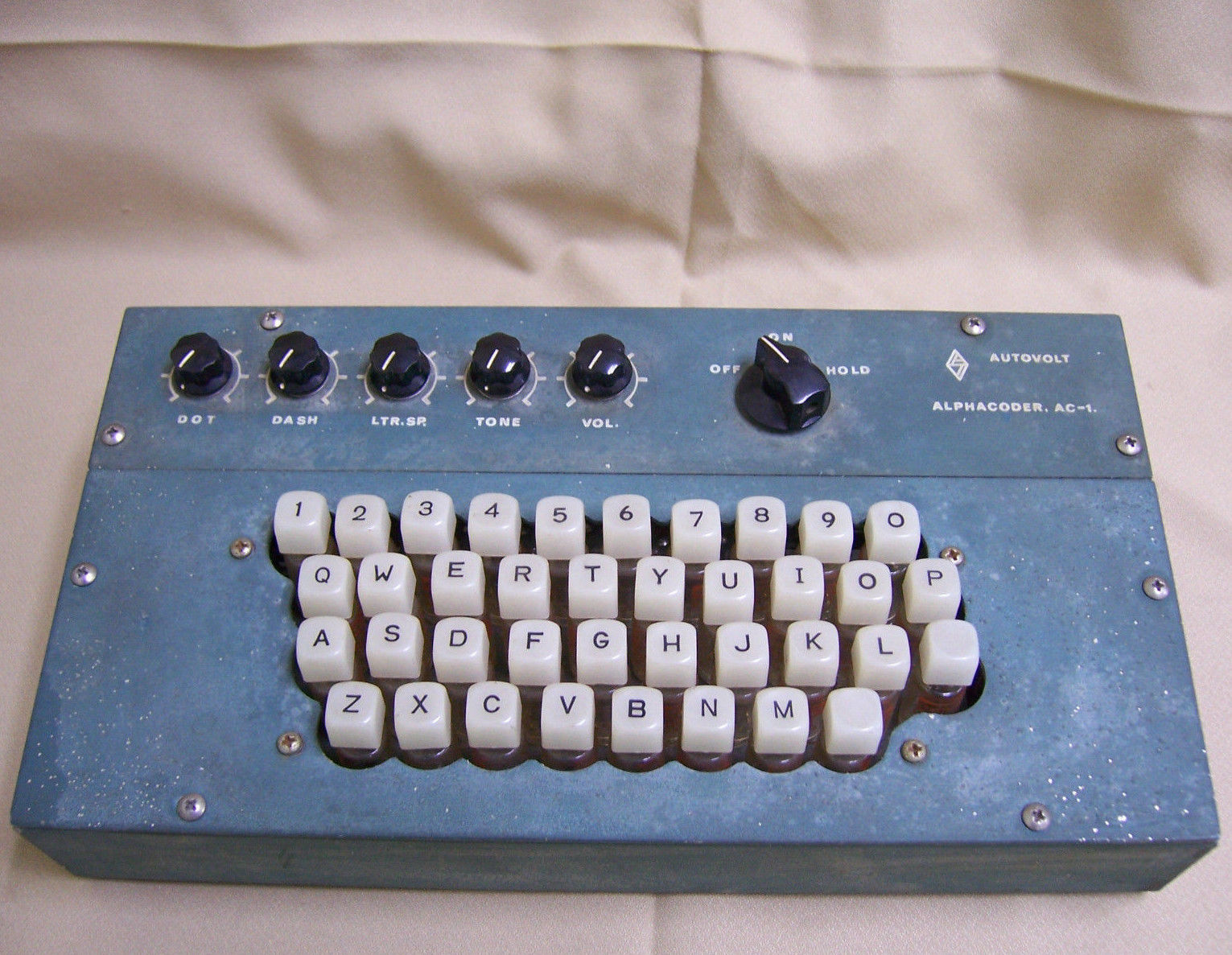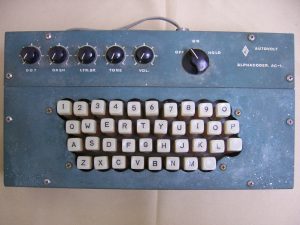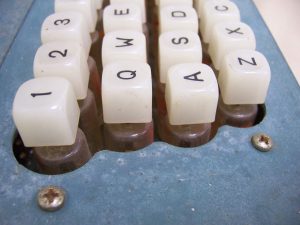
Friday, May 5, 2017 — Sometimes my curiosity gets the best of me, and that was the case recently while watching eBay late one dark and stormy night. Without warning whatsoever, that ol’ Lady Curiosity snuck up behind me and — WHAM! I done won an auction!
Oh brothers ‘n’ sisters of the Morse brotherhood, the old Zed Man done gone plum off Top Dead Center. But danged if I could help it! (Note to Self: For your own health and longevity, do NOT try to justify anything to the XYL with such an explanation.)
 As you can see in the accompanying photos, you’re either saying to yourself, “Self, I saw that piece of junk on eBay myself!” or (and more likely), “I wondered who the idiot was who bought THAT!”
As you can see in the accompanying photos, you’re either saying to yourself, “Self, I saw that piece of junk on eBay myself!” or (and more likely), “I wondered who the idiot was who bought THAT!”
I’ll plead guilty, brothers and sisters, it was yours truly who lost his mind and made an offer the seller of the Autovolt Alphacoder AC-1 would not refuse. I’ll use the term my XYL likes to bandy about: “Just a little retail therapy.” (Editor’s Note: Thankfully its not billed by the hour, hi!)
Of course, beyond the momentary loss of common sense, the story ripens further.
When expecting ham radio, er … “goodies” in the mail, I make it a point to get to our big honking rural mail box before the XYL gets home. There’s far less ‘splaining to do that way, you see. The day my new-to-me AC-1 keyboard-a-gig arrived, as luck (and karma) would have it, my wife beat me to the mail box. She completed the drive up our hill to the house, and she waltz in the back door carrying a medium-sized box under one arm.
So much for the land of good intentions.
And then she spoke (in that syrupy sweet voice of hers, dripping with the sarcasm of a well-knowing woman), “Watcha got in the box, honey bunny?”
Oh hell!
“Oh, just a Morse code thingie for the shack,” I quickly muttered under my breath hoping she wouldn’t pay attention. But I was truthful, I get points for that, right?
My mistake was thinking: A. She wasn’t paying attention, and B. She was going to give me points for honesty.
I could feel the heat of her glare intensify; her body language didn’t imply or simply communicate her response — it downright screamed it at the top of its lungs: “Don’t you have enough junk in your shack already??”
While I’m always a man of action (my favorite action is usually “run like hell”), in this case retreat was not an option.
I immediately launched into “unrelated small talk,” praying that something I said would launch a tangent she would follow. Nope.
Well, she wasn’t that mad, she just relishes the opportunity to make me squirm (a common sport among most women it seems).
 THE AUTOVOLT ALPHACODER AC-1. When I bid on the keyboard, I had no real clear idea of its vintage. There’s absolutely nothing on Google about it, and it isn’t in N3CW’s new book. As comprehensive as his book is, this thing apparently wasn’t produced in large numbers.
THE AUTOVOLT ALPHACODER AC-1. When I bid on the keyboard, I had no real clear idea of its vintage. There’s absolutely nothing on Google about it, and it isn’t in N3CW’s new book. As comprehensive as his book is, this thing apparently wasn’t produced in large numbers.
So here’s what I’ve found out so far about the AC-1. The keyboard uses a diode matrix for the keying (the diode board is part of the mount for the keyboard keys. Each key is basically a spring loaded single pole momentary switch. A second PC board is mounted on the bottom, connected to the diode matrix board with several hard-soldered wires. The second board has several TO-92 package transistors on it, and a variety of other discrete components. No integrated circuits.
As a guy who has owned and used a number of CW keyboards over the years, I find the details of this unit interesting.
ADJUSTMENTS GALORE. Now volume and tone adjustments are a given, and thankfully, the tone overall is pleasant and not screechy. Speed? How would you like to adjust the speed? You can independently adjust the speed of the dits, the speed of the dahs, as well as the spacing between characters.
The 3 position rotary switch on the top panel has off, on and hold; the hold position simulates a “key down” or “tune” position.
The connector isn’t a 1/4-inch phone or RCA jack, but a two-pin microphone jack. The unit has a built-in AC supply. I’m guessing mid-1960s perhaps?
Now the AC-1 has a problem. When you turn it on it is fine until you press the first key. After the selected character is sent, the keyboard begins to send a constant series of “dits.” I haven’t tried to troubleshoot the thing yet, but I’m guessing there’s a voltage that’s not switching back to its normal state once a key is pressed.
I’m going to do a little research to see if I can find something about early CW keyboards that used discrete components, maybe I can find something that operates in a similar manner.
More coming next time about my experience with CW keyboards … 73 es CUL de KY4Z …. SK … dit dit …
-30-
